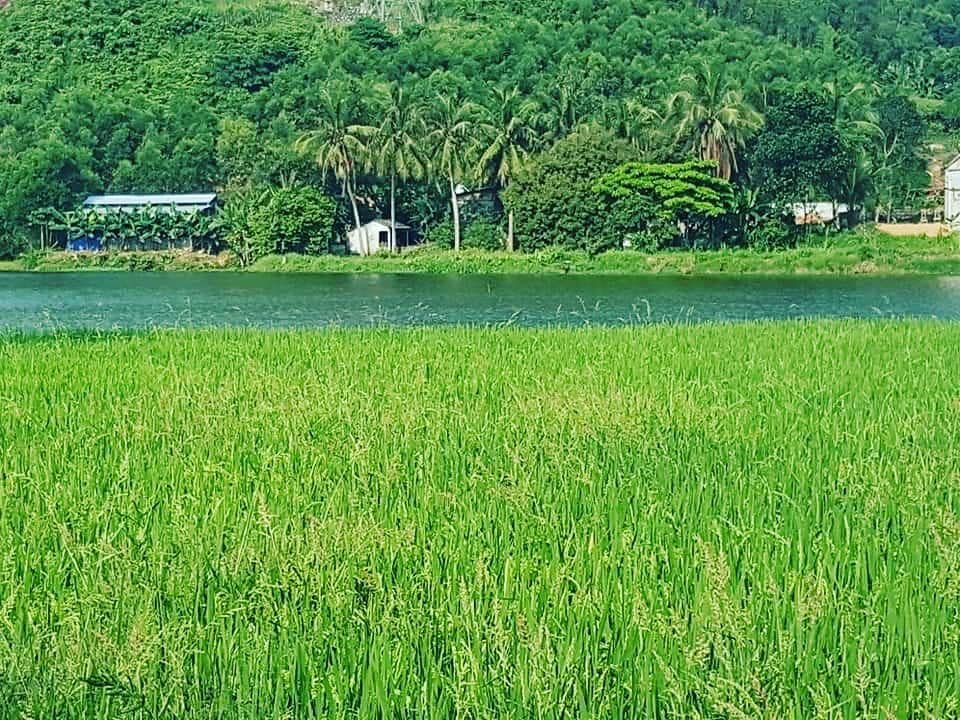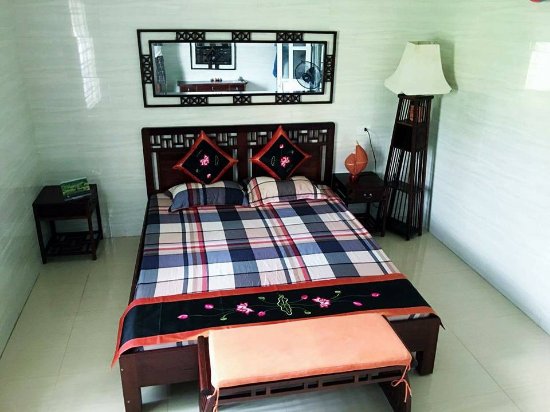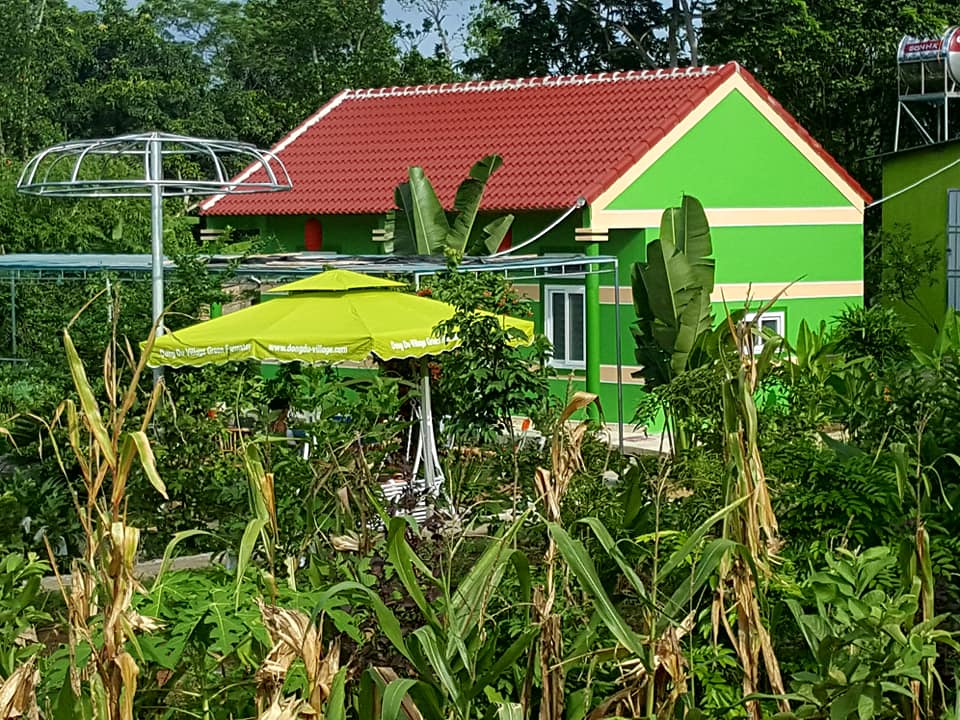Travel Blog
Dong Du Village Lakeside Farmstays
Visiting Pu Mat National Park in Nghe An
Updated: 28/6/2018 | 3:33:59 PM
Pu Mat National Park, 130 km from Vinh city in Nghe An province, is the largest forest in north-central Vietnam and a world nature reserve. This is a hidden gem which is still unexplored by mass tourism
Its beautiful landscape and abundance of fauna and flora have also made Pu Mat a popular tourist destination. Pu Mat National Park is located on the eastern slope of the Truong Son mountain range, spanning the Con Cuong, Anh Son, and Tuong Duong districts of Nghe An province. Pu Mat, in the Thai language, means ‘high slopes’.
The park was established in 2002 and recognized by UNESCO as a World Nature Reserve in 2007,with a core area of 94,000 ha and a buffer zone of 100,000 ha.
At 1,840 meters above sea level, Pu May is cloudy the year around. It is one of Vietnam’s principal nature reserves, with 2,400 flora species that include numerous valuable herbal plants.
Of these flora species, 37 are listed in Vietnam’s Red Book and 20 which are in the world Red Book. The forest also has 240 fauna species that include elephant, tiger, and a rare animal called a saola, that looks like a cross between an antelope and a goat or cow.
The saola, also known as the ‘Asian unicorn’ is one of the world’s rarest species. It was completely unknown before 1992 and has been found living only in the Truong Son forest of Vietnam and Laos.
It is also on the Red List of Threatened Species of the International Union for Conservation of Nature and Natural Resources.
Cao Tien Trung, an official of Vinh University, said, “Pu Mat Nature Reserves has great biological importance. Pu Mat National Park, Pu Huong Nature Reserve, and Pu Hoat Nature Reserve represent a rich source of rare and precious genetic material.”
Running across Pu Mat National Park is the Giang River, whose magnificent waterfalls, channels, and caves draws many tourists and has boosted local incomes.
Nguyen Van Vinh, a tourism official in Nghe An province, said, “Pu Mat National Park has a great tourism potential in mountain climbing, kayaking, and camping. Ecological tours are becoming increasingly popular in Vietnam as in the rest of the world.”
In the buffer zone of the National Park are villages inhabited by Thai, Kho Mu, O Du, and Dan Lai ethnic minority people, who still cling to their traditional customs and culture.
Ngo Kim Hong, a tourist from Hanoi, said, “Dancing over bamboo poles and drinking rice wine through bamboo tubes are impressive experiences. Visiting the Thai villages, I love to watch the locals weave their brocades. It’s fun to pose for a photo in a beautiful Thai brocade dress while standing beside a waterfall or in the dense forest.”
Pu Mat National Park is a place where scientists can explore a rich biodiversity of unspoiled nature while tourists explore the area’s beautiful scenery and rich ethnic cultures.
Biosphere Reserve of Western Nghe An
Development - foster economic and human development which is socio-culturally and ecologically sustainable
A range of nature reserves: Pu Hoat, Pu Huong and Pu Mat National Park covering approximately 500,000 ha (including the buffer and core zone), with a population of 200,000 peoples will attaches to the natural resource value, landscapes and cultural tradition. It contributes to economic development to ensure the successful building of sustainable development strategy. Recently, the government has decided to build hydroelectric plant project in Nam Non river (center of O Du territory), namely, Ban Ve hydroelectric plant. It will be started in early 2006 and fished in 2010, covering an area of 4,500 ha water surface, an output of 75.5 MW. This project will contribute to impulse the development of economy for the entire region.
On the other hand, the potential for eco-tourism development base on natural resources in the region is diversified and abundant. Visitors are attracted by natural landscape and scenic beauty of entire region from Pu Hoat, Pu Huong and Pu Mat National Park, Pu Hoat – Pu Pha Lang – Pu Pha Nha mountain chains reach to Pu Khang, Pu Huong with a peak of above 1500m (the highest peak 2,452m) in Ca river valley in the north, Pu Xai Lai Leng, Pu Den Din, Pu Mat, Cao Veu in Ca river valley in the south. A system of rivers and streams in the upper of Ca river valley have created not only unique landscape but also bold human culture region of Thai ethnic people (along the banks of Hieu river, Nam Mo river, Khe Thoi river), O Du ethnic people (along the banks of Nam Non river), Dan Lai ethnic people (Khe Choang river) and intermix cultures along the banks of rivers and streams. However, natural landscape value and character value of cultures attach the potential of tourism have not been exploited yet.
The local government has some policy which encourages developing eco-tourism combining cultural tourism with the native community participation in forest resource protection and development. This is a strong point fostering sustainable development in the entire region. Tourism activities with the objects in order to enhance community awareness of environmental and natural landscape protection and traditional culture value which bring about the welfare benefits to local people. These activities have been contributing to the conservation of the full hierarchy of biodiversity, including landscapes, ecosystems, species and genes.
It’s the conservation work that assist in economic development. With wide forest area distributing in the riverhead zone, forest of Pu Huong Nature Reserve have important significance in environmental protection and riverhead protective for Ca river and Hieu river as well as flood and drought control function in the lower of these rivers.
The provincial people’s committee implements the guidance of Government following Document No 933/CP-DP dated 5 July 2004 on development assistance programme for ethnic minority who meet with difficulties and have danger of extinct. Carry out the project “Development assistance for O Du ethnic people in the mountainous region of Nghe An province ” in order to implement economic – cultural – social development and environmental protection in O Du ethnic region stability, long- term, conserve and bring into play specific culture factor of the native O Du.
At present, the buffer zone of Pu Huong Nature Reserve strengthen the economic activities in 12 communes belong to 5 districts: Cam Muon, Quang Phong communes (Que Phong district), Chau Thanh, Chau Cuong, Chau Thai communes (Quy Hop district), Chau Hoan, Dien Lam communes (Quy Chau district), Binh Chuan (Con Cuong district), and Nga My, Yen Hoa, Yen Tinh, Huu Khuong communes (Tuong Duong district), contiguous to the boundary of Nature Reserve with an area of 110,883 ha
The whole communes in the buffer zone of Nature Reserve are remote communes which are very poor in the 135 program. Inhabitants mainly work in agriculture sector, producing food in small scale, cattle grazing, and logging. Economic activities are based on natural resource. Advanced technology in agriculture has not been received adequate attention. Agricultural product prices are unstable. Consequently, local people’s income is generally low. Labor capacity is relatively poor; productivity is therefore not high. There are number of jobless people during leisure after harvest time.
Infrastructure like traffic system, schools, hospitals in the buffer zone have not fully supported the local community. Most of these are not electrically installed causing difficulties in economic development and cultural exchange.
(Source: Dong Du Village Lakeside Farmstay)
Other news
- Potential and outlook of eco-tourism in Việt Nam
- A japanese expert was inspired by natural treasure of Pu Mat National Park, Nghe An
- Enjoy swimming, kayaking or fishing in the Khe Lau lake
- Peaceful vibes and comfortable homestay in Dong Du village
- Les alentours de gite Dong Du
- Decouverte de la campagne verdoyante
- Nghe An’s World Biosphere Reserve Recognized
- Visiting Pu Mat National Park
- Pu Mat National Park, Con Cuong, Nghe An
- GITE RURAL CHEZ THUY FARMSTAY - un charmant hébergement en nature











